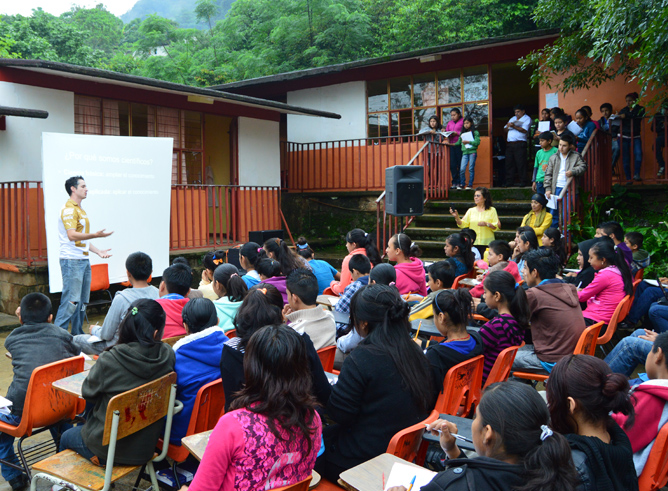Día de la Ciencia: Biologists share insights with villagers in Mexico
Image: College of Science, Texas A&M University
For biologists like Texas A&M University’s Gil Rosenthal, the remote Mexican village of Calnali is a bona fide bonanza of research opportunities, from its bustling streams to its dense and diverse vegetation.
In fact, it seems the only people who haven’t made good on Calnali’s bounty of natural-resource riches are its natives, who meagerly persevere despite long socioeconomic odds and simple, agrarian ways of life.
Inspired by a recent National Science Foundation grant, Rosenthal and his lab group have spawned an idea intended to help change that — an annual environmental awareness program for the citizens of Calnali called “Día de la Ciencia” or “Day of Science.”
“We just wanted to share our knowledge with them,” said Rosenthal, a member of the Texas A&M Department of Biology faculty since 2006. “We also wanted to relay important conservation techniques and explain the natural resources that are available to them.”
Calnali is located deep in the Sierra Madre Oriental Mountains of Hidalgo, one of Mexico’s poorest states. As it is in many underdeveloped regions, daily life in Calnali is simple and dictated by tradition. Many locals rely on subsistence agriculture, supplemented by remittances from relatives living in urban areas or abroad.
What Calnali may lack in the way of economic opportunity is compensated by its rich ecosystem and abundance of freshwater reservoirs, making it a popular spot for field biologists from around the world. Rosenthal, a respected expert in animal behavior, first began making pilgrimages there a decade ago to probe mating preferences among swordtail fish native to the Río Calnali as a model species for understanding evolutionary genomics. In 2005, Rosenthal co-founded the Centro de Investigaciones Científicas de las Huastecas “Aguazarca” (CICHAZ) research center in Calnali.
Despite all Calnali has to offer for researchers, its citizens have precious little to show for it in the way of educational, environmental or economic benefits. Whenever older townspeople lamented the decline of the once-formidable Río Calnali — now reduced to a polluted slough in some areas, compared to the rushing brook it once had been — Rosenthal took note.
“If we’re going to center our research on this region, which is still being stewarded by the very people who live there, we have to do our part to give back,” Rosenthal said.
#TAMUresearch
#12thManResearch


